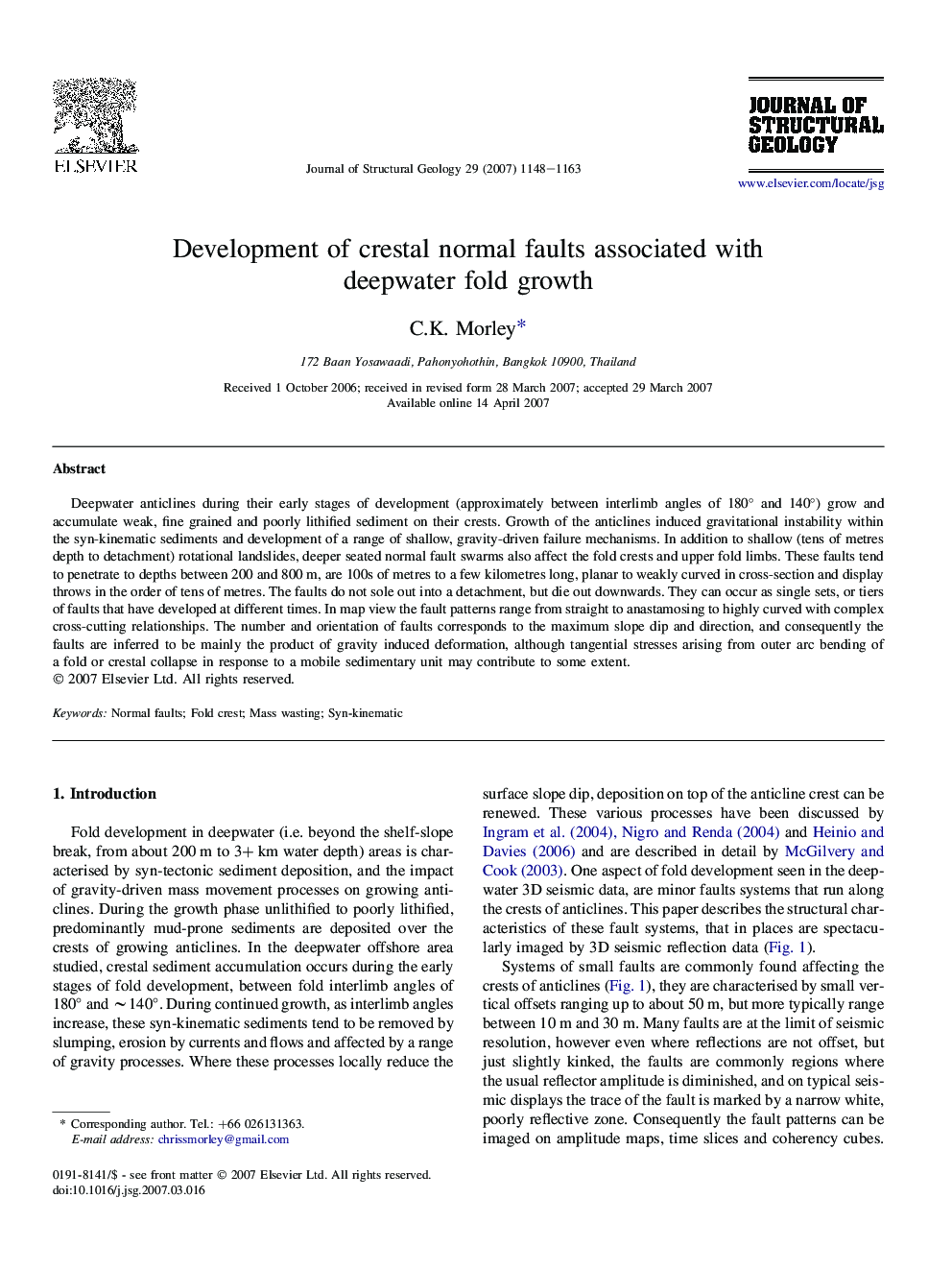| Article ID | Journal | Published Year | Pages | File Type |
|---|---|---|---|---|
| 4733908 | Journal of Structural Geology | 2007 | 16 Pages |
Deepwater anticlines during their early stages of development (approximately between interlimb angles of 180° and 140°) grow and accumulate weak, fine grained and poorly lithified sediment on their crests. Growth of the anticlines induced gravitational instability within the syn-kinematic sediments and development of a range of shallow, gravity-driven failure mechanisms. In addition to shallow (tens of metres depth to detachment) rotational landslides, deeper seated normal fault swarms also affect the fold crests and upper fold limbs. These faults tend to penetrate to depths between 200 and 800 m, are 100s of metres to a few kilometres long, planar to weakly curved in cross-section and display throws in the order of tens of metres. The faults do not sole out into a detachment, but die out downwards. They can occur as single sets, or tiers of faults that have developed at different times. In map view the fault patterns range from straight to anastamosing to highly curved with complex cross-cutting relationships. The number and orientation of faults corresponds to the maximum slope dip and direction, and consequently the faults are inferred to be mainly the product of gravity induced deformation, although tangential stresses arising from outer arc bending of a fold or crestal collapse in response to a mobile sedimentary unit may contribute to some extent.
